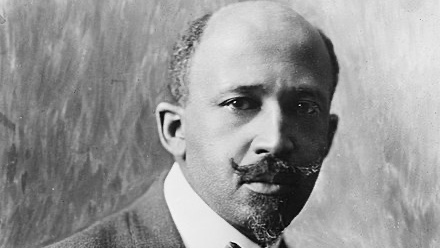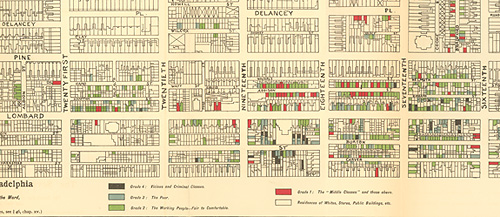
You may know W. E. B. DuBois as the author of The Souls of Black Folk and the founder of the NAACP. But did you know he was also a data visualization pioneer and invented techniques to understand health inequalities that were decades ahead of their time? 

(@DavidOlusoga and I tell this story in tonight’s episode of Extra Life on @pbs at 8PM/7Central — the episode is all about the surprising power of data to save lives, and DuBois is one of its central protagonists. The episode will air on BBC4 next Tues.)
pbs.org/show/extra-lif…
pbs.org/show/extra-lif…
In 1896, DuBois has just completed his PhD at Harvard (the first African-American to do so) and he gets a one-year job in Philadelphia, investigating what was then called “the Negro problem”—the poverty, poor health, and crime in the city’s largely African-American 7th Ward.
His challenge is fighting the prevailing racism of the day—visible in so-called scholarly texts with titles like “Race Traits and Tendencies of The American Negro”— that assumes that the crisis of inner city neighborhoods is the result of deficiencies in the “Negro race” itself.
He decides to fight back using data, launching an epic investigation into the conditions of the neighborhood, personally visiting 2,000 households in three months, compiling endless tables on occupancy levels, access to toilets and drinking water, mortality rates, and more.
He creates a groundbreaking map of the neighborhood, color-coded for different social classes; he demonstrates that black Philadelphians were twice as likely to die before the age of fifteen as their white neighbors. 

Most importantly, he shows how health inequalities are tied to the physical environment: “Broadly speaking the Negroes as a class dwell in the most unhealthful parts of the city and in the worst houses... Of the 2,441 families only 334 had access to bathrooms and water‐closets.”
He explains how infection rates for diseases like tuberculosis are so much higher because of higher occupancy rates in the 7th ward—with many apartments sleeping four or more people to a room. (A pattern we’ve seen again with the COVID pandemic.)
DuBois is inventing a discipline that will eventually come to be called “social epidemiology” decades later: the study of how social and economic conditions drive health outcomes and the spread of disease. He’s just 29 years old.
He goes on to create a brilliant exhibit for the 1900 Paris Expo, documenting the national condition of African-Americans in a series of dazzling infographics that look almost like modern art. 

In addition to our telling the story of DuBois in Philadelphia, all the infographics (and the title sequence) of our PBS/BBC series Extra Life were created as an homage to DuBois’ brilliant data visualizations from that period. 



And there’s more on DuBois and his brilliant investigations in the book version of Extra Life, available from bookstores in the US and the UK today. penguinrandomhouse.com/books/594501/e…
• • •
Missing some Tweet in this thread? You can try to
force a refresh




